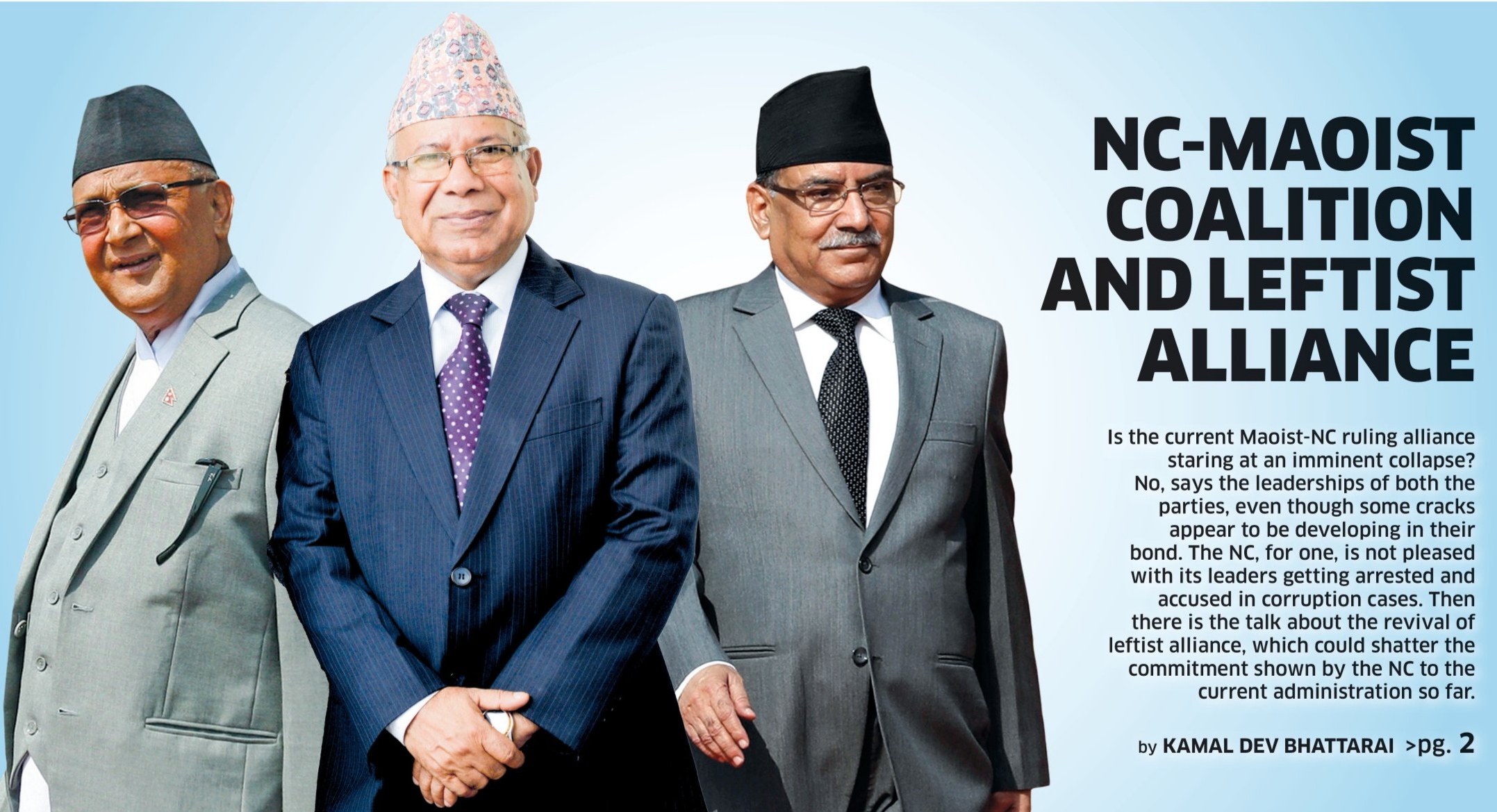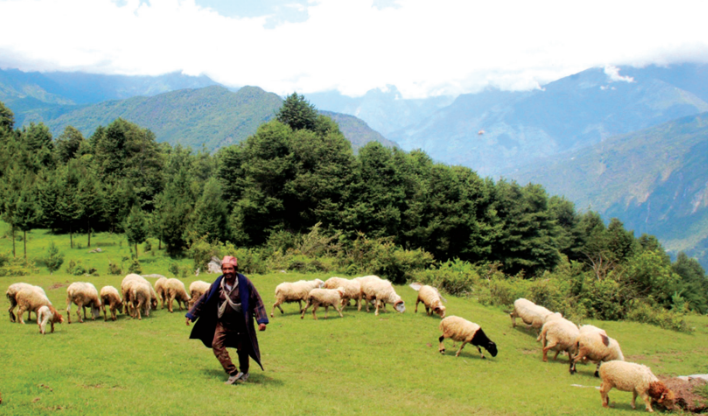Rabindra Puri: Rebuilding and restoring heritage sites
Quick facts
Born on 31 Dec 1969 in Bhaktapur
Went to Sharada Secondary School, Bhaktapur
Graduated in law, fine arts, history and management from Tribhuvan University
Post-grad from Bremen University, Germany
Started heritage conservation from Patan Museum restoration in 1990
Husband of Mindira Giri
Father to Sampada Puri and Sambardhan Puri
 As far as I can remember, art and architecture have always piqued my interest. Perhaps, this is due to the fact that I was born and brought up in Bhaktapur, a place of heritage. As a student, I wanted to pursue fine arts, but my father was insistent on me studying law instead. So, without informing my family, I studied fine arts and law simultaneously. By 1993, I had four Bachelor’s degrees in law, fine arts, history, and management. All of these qualifications would come in handy in the future.
I went to Germany for my Master’s degree in sculpture, only to later switch my course to development policy after learning the basics of sculpture art. I topped the university, which opened up a chance for me to work with GTZ-German Technical Cooperation (Deutsche Gesellschaft für Internationale Zusammenarbeit). This was a good and high-paying job, and also here, I realized that heritage work is what I wanted to do in my life.
I had a chance to be part of the Patan Museum restoration project in 1990. It was here that I developed a passion for the traditional architecture of Nepal. Being part of the project was one of my important life events. It holds a big part in getting me to where I am today.
Back then, traditional Nepali architecture was being supplanted by so-called modern structures. Our rustic, picturesque, medieval buildings were being torn down to make way for uninspiring gray concrete buildings. Seeing this pinched me enough to give up a secure future and dedicate my life to heritage conservation.
My first conservation project was ‘Namuna Ghar’ in 1999. It was a special undertaking, one that reflected Nepal’s glorious medieval art, architecture and history. The house being restored was over 150 years old, which was being used as a chicken coop. It was redesigned and rebuilt, featuring beautiful attributes of traditional Nepali architecture.
When I first joined the heritage conservation field, I was called insane for passing up a comfortable life and career in Europe and choosing a zero-income sector. But as soon as the ‘Namuna Ghar’ went on to win the UNESCO Asia-Pacific Awards for Cultural Heritage Conservation in 2004, all criticisms against me drowned out. People started to recognize my work.
Items that highlight Nepali culture and tradition are on display at ‘Namuna Ghar.’ The main objective for restoring and promoting it is to inspire Nepalis to appreciate and conserve their rich and beautiful heritage. I also started a homestay at the ‘Namuna Ghar’, and it was from here, the concept of bed and breakfast took off in Nepal.
[caption id="attachment_33208" align="alignnone" width="604"]
As far as I can remember, art and architecture have always piqued my interest. Perhaps, this is due to the fact that I was born and brought up in Bhaktapur, a place of heritage. As a student, I wanted to pursue fine arts, but my father was insistent on me studying law instead. So, without informing my family, I studied fine arts and law simultaneously. By 1993, I had four Bachelor’s degrees in law, fine arts, history, and management. All of these qualifications would come in handy in the future.
I went to Germany for my Master’s degree in sculpture, only to later switch my course to development policy after learning the basics of sculpture art. I topped the university, which opened up a chance for me to work with GTZ-German Technical Cooperation (Deutsche Gesellschaft für Internationale Zusammenarbeit). This was a good and high-paying job, and also here, I realized that heritage work is what I wanted to do in my life.
I had a chance to be part of the Patan Museum restoration project in 1990. It was here that I developed a passion for the traditional architecture of Nepal. Being part of the project was one of my important life events. It holds a big part in getting me to where I am today.
Back then, traditional Nepali architecture was being supplanted by so-called modern structures. Our rustic, picturesque, medieval buildings were being torn down to make way for uninspiring gray concrete buildings. Seeing this pinched me enough to give up a secure future and dedicate my life to heritage conservation.
My first conservation project was ‘Namuna Ghar’ in 1999. It was a special undertaking, one that reflected Nepal’s glorious medieval art, architecture and history. The house being restored was over 150 years old, which was being used as a chicken coop. It was redesigned and rebuilt, featuring beautiful attributes of traditional Nepali architecture.
When I first joined the heritage conservation field, I was called insane for passing up a comfortable life and career in Europe and choosing a zero-income sector. But as soon as the ‘Namuna Ghar’ went on to win the UNESCO Asia-Pacific Awards for Cultural Heritage Conservation in 2004, all criticisms against me drowned out. People started to recognize my work.
Items that highlight Nepali culture and tradition are on display at ‘Namuna Ghar.’ The main objective for restoring and promoting it is to inspire Nepalis to appreciate and conserve their rich and beautiful heritage. I also started a homestay at the ‘Namuna Ghar’, and it was from here, the concept of bed and breakfast took off in Nepal.
[caption id="attachment_33208" align="alignnone" width="604"]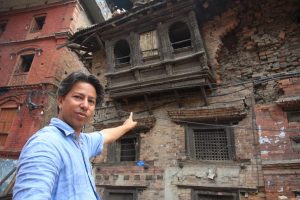 Rabindra Puri shows a house that he saved from excavator-demolishing to save all the ancient windows, doors and bricks in Ganchhen, Bhaktapur,[/caption]
This is how I turned my passion for heritage conservation into a profession. I restore old and damaged houses. By 2010, I was making a good income from my work. There is money in conservation because I don’t think there could be conservation without money.
Having completed over 70 projects, I now have a few dream projects left. To realize these dream projects, I founded the Rabindra Puri Foundation for Conservation in 2010.
I started getting many projects after that, but there was suddenly an acute shortage of workers. This was not because people didn’t want to work. It was because they didn’t have the required skills. So, I established the Nepal Vocational Academy in Panauti in 2015 and in Bhaktapur in 2017. The academy has been conducting short-term courses on woodcarving and masonry in affiliation with the Council for Technical Education and Vocational Training (CTEVT). Currently, we are constructing a university model of the academy in Panauti.
My other major project involves upgrading community schools in all 77 districts. Under the project, we are constructing and renovating community schools in traditional Nepali design. We have already constructed 16 schools in eight districts.
The Museum of Stolen Art is another project that is close to my heart. It aims to preserve the traditional arts, artifacts and monuments of Nepal by raising awareness about lost and stolen Nepali arts and artifacts. As an initial step, we planned to display the replicas of 50 lost and stone sculptures. To date, we have already made 40 replicas.
Many Nepalis have no idea that our precious art and artifacts are being trafficked. So, the museum aims to create social, ethical and administrative pressure on all national and international authorities to end this practice and repatriate our stolen artifacts.
I am also involved in ‘Mission Panauti’ that aims to renovate all the heritage sites of Panauti, which happens to be an antique and unique Newa city outside Kathmandu valley. Our foundation has already handed over the first phase of the master plan of the Mission Panauti: Making Panauti a UNESCO heritage site. We are now working to enlist Panauti on the UNESCO heritage list. The other major projects that I have worked on are the ‘Toni Hagen House,’ ‘Basuki Ghar,’ and ‘Namuna Gaun’.
Rabindra Puri shows a house that he saved from excavator-demolishing to save all the ancient windows, doors and bricks in Ganchhen, Bhaktapur,[/caption]
This is how I turned my passion for heritage conservation into a profession. I restore old and damaged houses. By 2010, I was making a good income from my work. There is money in conservation because I don’t think there could be conservation without money.
Having completed over 70 projects, I now have a few dream projects left. To realize these dream projects, I founded the Rabindra Puri Foundation for Conservation in 2010.
I started getting many projects after that, but there was suddenly an acute shortage of workers. This was not because people didn’t want to work. It was because they didn’t have the required skills. So, I established the Nepal Vocational Academy in Panauti in 2015 and in Bhaktapur in 2017. The academy has been conducting short-term courses on woodcarving and masonry in affiliation with the Council for Technical Education and Vocational Training (CTEVT). Currently, we are constructing a university model of the academy in Panauti.
My other major project involves upgrading community schools in all 77 districts. Under the project, we are constructing and renovating community schools in traditional Nepali design. We have already constructed 16 schools in eight districts.
The Museum of Stolen Art is another project that is close to my heart. It aims to preserve the traditional arts, artifacts and monuments of Nepal by raising awareness about lost and stolen Nepali arts and artifacts. As an initial step, we planned to display the replicas of 50 lost and stone sculptures. To date, we have already made 40 replicas.
Many Nepalis have no idea that our precious art and artifacts are being trafficked. So, the museum aims to create social, ethical and administrative pressure on all national and international authorities to end this practice and repatriate our stolen artifacts.
I am also involved in ‘Mission Panauti’ that aims to renovate all the heritage sites of Panauti, which happens to be an antique and unique Newa city outside Kathmandu valley. Our foundation has already handed over the first phase of the master plan of the Mission Panauti: Making Panauti a UNESCO heritage site. We are now working to enlist Panauti on the UNESCO heritage list. The other major projects that I have worked on are the ‘Toni Hagen House,’ ‘Basuki Ghar,’ and ‘Namuna Gaun’.
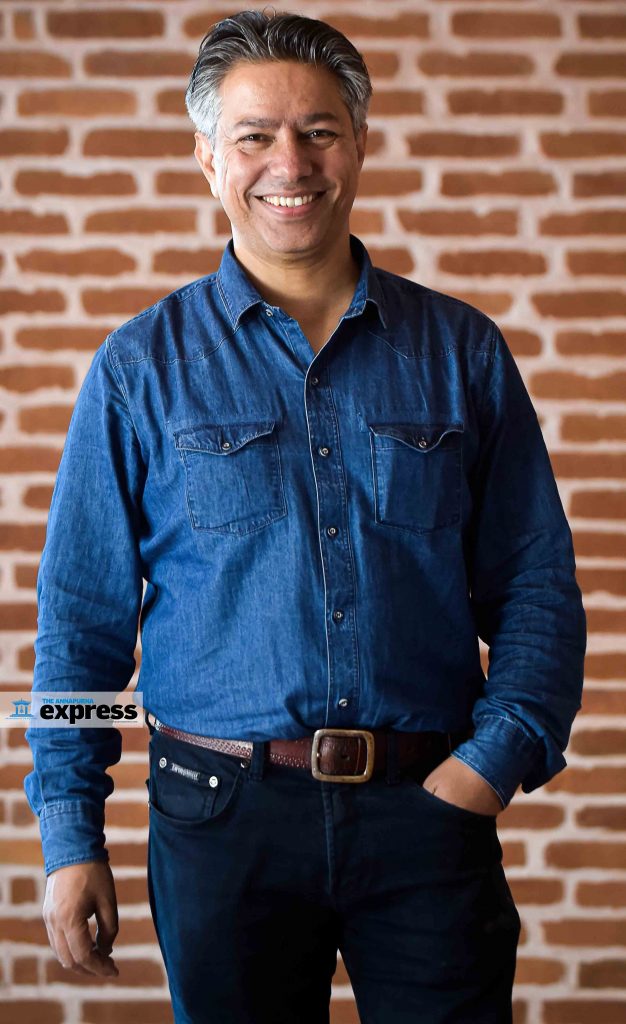 About him
Sampada Puri (Daughter)
About him
Sampada Puri (Daughter)
 My father is the quintessential example of a man driven by passion and hard work. Everything he does is ruled by his big heart. There isn’t a day I don’t get inspired by his dedication towards his work and his humble approach to life. Not only is he a pillar of strength for his colleagues and workers, he is also an amazing father who has always supported me.
Prakash Kuinkel (Colleague)
My father is the quintessential example of a man driven by passion and hard work. Everything he does is ruled by his big heart. There isn’t a day I don’t get inspired by his dedication towards his work and his humble approach to life. Not only is he a pillar of strength for his colleagues and workers, he is also an amazing father who has always supported me.
Prakash Kuinkel (Colleague)
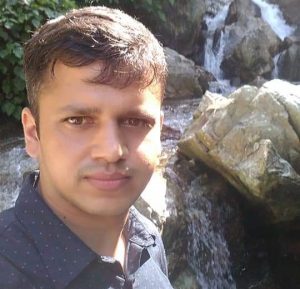 Rabindra Puri is a dreamer. He always dreams of massive projects and works tirelessly to realize them. Once he completes his one dream, he is already on to the next one. At one time, he wanted to build 100 heritage houses, but now he is focusing on 1,000 such houses.
Devendra Bhattarai (Friend)
Rabindra Puri is a dreamer. He always dreams of massive projects and works tirelessly to realize them. Once he completes his one dream, he is already on to the next one. At one time, he wanted to build 100 heritage houses, but now he is focusing on 1,000 such houses.
Devendra Bhattarai (Friend)
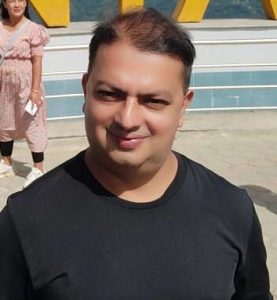 Rabindra ji has been working in heritage and archeology conservation and development for decades. He has never sought any recognition or promotion for his work. This shows his passion for heritage conservation. He took the initiative of starting the Museum of Stolen Arts in Panauti with the goal of repatriating the stolen artifacts. It is a wonderful work of awareness and caution for the entire art world.
Rabindra ji has been working in heritage and archeology conservation and development for decades. He has never sought any recognition or promotion for his work. This shows his passion for heritage conservation. He took the initiative of starting the Museum of Stolen Arts in Panauti with the goal of repatriating the stolen artifacts. It is a wonderful work of awareness and caution for the entire art world.
Ninth National Games: Why so many players got injured?
The APF Club and the Lumbini Province were playing the quarter-final match of the volleyball under the Ninth National Games on October 18. Three players sustained injuries during the second set of the third quarter-final. Rupendra Gaire and Tek Raj Awasti of the APF and Bijay Pariyar of Lumbini were sent to the hospital for treatment. Later, the quarter-final match was called off. They were playing on the old mats because of which they slipped and fell down. Prior to that, three players had also sustained injuries. Prem Kumar of Gandaki got one of his legs fractured while playing with Bagmati. Chiranjibi Khadka of Gandaki and Hemanta Malla of APF also got injured. Later, the organizer removed the mats amidst the protest from ordinances and players. The medical center of the Health Sub-Committee near the main gate of the Pokhara stadium saw a large number of players every day. Some came with their legs fractured. Almost all the players come there with some kind of health problems. Most of the players, who came to the medical center, had soft tissue injuries, fractures and were infected with dengue, Dr Ham Nath Acharya of the Sub-Committee Secretariat. He said that 650 players sustained injuries during the tournament. Among them, 130 were referred to different hospitals. Four had to undergo surgery. At least 6, 127 players had taken part in the national games this year. That means, 10 percent were injured in the games. Dr Acharya said that the number of players who suffered injuries has increased due to lack of training, unmanaged ground, dress and discipline among others. Sports expert Diwakar Lal Amatya said that many players got injured owing to lack of fitness and junk food. Another sports expert Sushil Nursingh Rana said that the problem was seen due to lack of regular training and fitness. He said that the players should have special training for at least six months in the big tournaments like national games. Health Sub-Committee Coordinator Dr Bulanda Thapa said that among 6, 000 plus players of 36 games, only four had to undergo surgery which can be considered quite good. He, however, said that paragliding player Nimesh Thapa died due to a technical problem.
Will the government declare a climate emergency?
In August last year, the then Minister for Forest and Environment Pradeep Yadav had said that preparations were underway to declare a climate emergency. Since then, there has been a debate about its relevance. Concerned stakeholders have been expressing their concern. Dr Buddhi Paudel, Chief at Climate Change Management Division at the Ministry, said that concerned authorities have been analyzing the facts. He was of the opinion that work is being done in such a way that a climate emergency has been declared in the country. Paudel said that 18 countries have declared a climate emergency in the world. “Thirty-nine countries have declared a climate emergency at the district level. How are they working? How easy is it to bring climate finance with such work? These kinds of issues will be discussed,” he said. He was of the opinion that the government has no exact details about how many areas have been affected. Paudel said that that is the main problem. Climate change expert Ajay Dixit opined that the government should be clear on what basis and how long a climate emergency will be declared in which area. Expert Madhukar Upadhyay said that a crisis or emergency means that the problem is serious. He said that the seriousness has increased. “The government will declare a climate emergency anytime. The country needs help if the situation goes out of control,” he said. He said that a climate emergency can be declared immediately by formulating the policy. Upadhyay said that it will be easy to address the problems of climate change once the emergency is declared in the country. He, however, said that the government has no proper knowledge about the time to impose the emergency. He said that the time has still not come to declare a climate emergency in the country. “But, the emergency can be declared in the affected areas. The monsoon rain has been changing its pattern for the past few years. Some areas have been receiving light rainfall while some have been witnessing heavy rainfall,” he said. “Recently, the floods in Pakistan killed thousands of people and destroyed properties worth millions which was unbearable to the country. In that case, an emergency can be declared,” he said. He said that there is no point to impose an emergency only to get climate finance from the donors at the climate conference to be held in Egypt in November. Upadhyay said that Pakistan can declare an emergency for not less than 10 years as per the recent incident. “Because the lives of people should be saved. Source should be protected. It will take time to carry out reconstruction. Emergency can be declared by observing the situation,” he said. He further said that the process to claim climate finance is difficult. Dr Bimal Regmi, member of Environment and Climate Council, said that all the resources of the country should be focused once the emergency is declared. “We need evidence to make our decision strong. World politics should be in our hands. We need a strong basis,” he said. The then Minister Yadav had entrusted the Council with the work. He had said, “The incident of Pakistan has taught us a lesson. We have the same geography. We may face incidents like that of Pakistan. Now, the emergency should be declared. There is no alternative.” “The government will work seriously and the world’s attention will also be drawn once the emergency is declared.” Minister Yadav was preparing to declare the emergency prior to COP 27. The government has recently removed Minister Yadav from his post. Prime Minister Sher Bahadur Deuba has kept the ministry with himself.
It is official, Xi secures third term
Xi Jinping was elected general secretary of the 20th Central Committee of the Communist Party of China (CPC) at the committee's first plenary session held on Sunday, according to a communique, Xinhua reported. The session, presided over by Xi, was attended by 203 members of the 20th CPC Central Committee and 168 alternate members. Xi was also named chairman of the CPC Central Military Commission at the session. The members of the Standing Committee of the Political Bureau of the CPC Central Committee elected at the session are Xi Jinping, Li Qiang, Zhao Leji, Wang Huning, Cai Qi, Ding Xuexiang and Li Xi. Also elected were members of the Political Bureau of the CPC Central Committee at the session, which endorsed the members of the CPC Central Committee Secretariat nominated by the Standing Committee of the Political Bureau of the CPC Central Committee, according to Xinhua. The session named the members of the Central Military Commission. The session approved the secretary, deputy secretaries and members of the Standing Committee of the Central Commission for Discipline Inspection (CCDI) elected at the first plenary session of the 20th CCDI.















